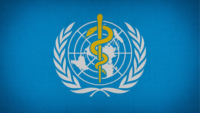WHO Calls for Experts to Estimate 2025 Disease Burden for Four Toxic Heavy Metals

Image credit: Dylann Hendricks via Unsplash
The World Health Organization (WHO) Department of Nutrition and Food Safety has initiated a process for the collection and assessment of evidence to estimate the global burden of foodborne diseases for 2025. WHO is seeking support from independent consultants or group(s) of experts with relevant expertise and experience to undertake systematic reviews to synthesize relevant evidence regarding four toxic heavy metals.
Specifically, WHO is interested in collecting data on the disease burdens of the following conditions:
- Chronic kidney disease caused by dietary exposure to cadmium
- Intellectual disability caused by dietary exposure to methylmercury
- Lung, bladder, and skin cancer caused by dietary exposure to inorganic arsenic
- Intellectual disability and cardiovascular diseases caused by dietary exposure to lead.
During 2007–2015, estimates of the global burden of diseases from three chemical hazards and toxins were generated. The Chemicals and Toxins Taskforce (CTTF) in the first iteration of WHO’s technical advisory group, “Foodborne Disease Burden Epidemiology Reference Group for 2007–2015 (FERG1),” considered that evidence to estimate the disease burden caused by cadmium, methylmercury, inorganic arsenic, and lead was available, and global estimates for intellectual disability due to methylmercury and lead, chronic kidney disease caused by cadmium, and lung, bladder and skin cancer and coronary heart disease caused by inorganic arsenic were later published in the scientific literature. Various models and data were used to generate the global estimates, but all applied a risk assessment approach.
CTTF under the FERG for 2021–2025 (FERG2) has developed a work plan that prioritizes various chemicals and toxins for systematic reviews to identify the global burden associated with the individual specific hazards and how much disease associated with the relevant hazard was due to contaminated food. In the second iteration of FERG, the CTTF has prioritized the inclusion of the disease burden of cadmium, methylmercury, inorganic arsenic, and lead in the global estimates for 2025.
Candidates submitting expressions of interest are expected to be able to work independently as well as interact regularly and collaboratively with the WHO team and an external group of technical experts.
The expression of interest with a proposal can be submitted for systematic reviews covering all relevant or select hazards, depending on the interest of the experts. The deadline for the expression of interest is July 21, 2023.
Looking for a reprint of this article?
From high-res PDFs to custom plaques, order your copy today!







